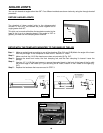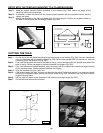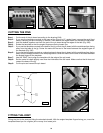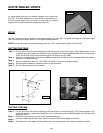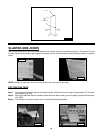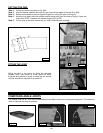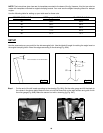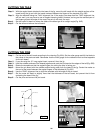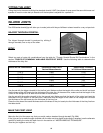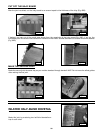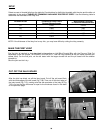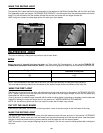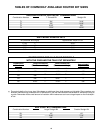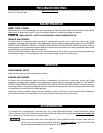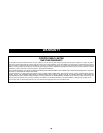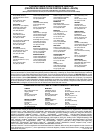
40
INLAYED BOX JOINT
This joint is made by cutting two box joints on top of each other.
SETUP
Select one set of dovetail bits from the table for “Box Joint Bit Combinations" in the section"TABLES OF
COMMONLY AVAILABLE ROUTER BIT SIZES". Use the following table to determine the thickness of the inlay line:
Straight Bit Set
B2
B3
Thickness of Inlay Line
1/16"
1/8"
NOTE: If the thickness of the inlay line is very thin, you may have difficulty in cutting the inlay correctly.
You must plane the inlay board to the thickness of the second board plus the thickness of the inlay line.
MAKE THE FIRST JOINT
The first joint is identical to a box joint with alternate router bit sizes as found in the section “ALTERNATE ROUTER
BITS”. Make a box joint with the first board and the inlay board. Use the larger straight bit with the first board and
the smaller bit with the inlay board.
If the jig is set up to make through dovetails with the tails and pins slightly protruding or recessed, use the alternate
method of setting the router bit depth found in the section on “MISCELLANEOUS TECHNIQUES”.
NOTE: For the tails and pins to be flush, be careful to make the bit depth very precise.
CUT OFF THE INLAY BOARD
After the joint has dried, cut off most of the inlay board. Leave an amount equal to the thickness of the inlay.
MAKE THE SECOND JOINT
The second joint is also identical to a box joint with alternate router bit sizes as found in the section “ALTERNATE
ROUTER BITS”. Make a box joint with the board from the previous section and the second board. Use the smaller
straight bit with the board from the previous section and the larger bit with the second board.
HINT: this section of your project (aligning the joint) is easier if you do not move the offset guides after making the
first joint.
MAKE THE SECOND JOINT
The second joint is also identical to that described in the section on Half-Blind Dovetail Bits with the Pins and Tails
Cut Separately under the chapter “ALTERNATE ROUTER BITS”. Use the board from the previous section as the tail
board. Cut the tail board with the smaller dovetail bit and the pin board with the larger dovetail bit.
HINT: Using two routers to make these joints will make your work easier.
Fig. 72A
Fig. 72B



